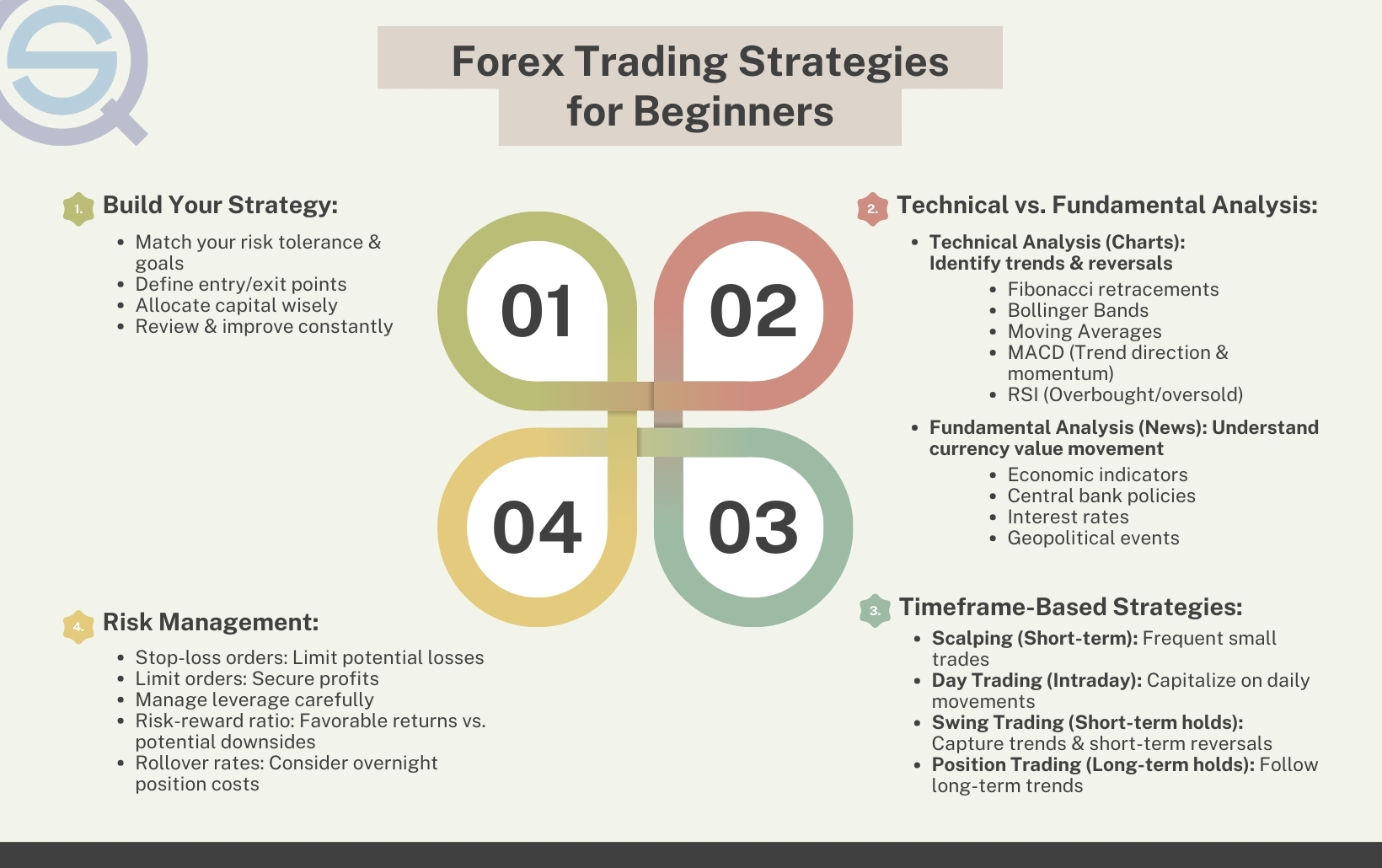Did you know that some day traders can make more trades in a single day than most people make in a month? In the fast-paced world of day trading, especially scalping, success hinges on precise strategies, effective risk management, and keen market analysis. This article explores the key strategies and traits of successful day trading scalpers, the psychological factors that influence their performance, and the essential tools they use. We also discuss how beginners can learn from these experts, the impact of market conditions, and the importance of discipline in trading. Join us at DayTradingBusiness as we delve into the compelling case studies and insights that can elevate your trading game.
What are the key strategies used by successful day trading scalpers?
Successful day trading scalpers use several key strategies:
1. High-Frequency Trading: They execute numerous trades within short time frames, capitalizing on small price movements.
2. Technical Analysis: Scalpers rely on charts, indicators, and patterns to identify entry and exit points quickly.
3. Liquidity Focus: They choose highly liquid stocks or assets to ensure quick trade execution and minimal slippage.
4. Tight Spreads: Successful scalpers look for assets with tight bid-ask spreads to maximize profit margins.
5. Risk Management: They employ strict stop-loss orders to limit potential losses on each trade.
6. Market News Monitoring: Staying updated on market news allows them to react swiftly to price-changing events.
7. Discipline and Consistency: They stick to their trading plan and avoid emotional decisions, maintaining a consistent approach.
These strategies enable scalpers to achieve quick profits while managing risk effectively.
How do successful scalpers manage their risk in day trading?
Successful scalpers manage risk through strict stop-loss orders, position sizing, and meticulous trade planning. They often use technical analysis to identify entry and exit points, ensuring they limit potential losses. For example, a scalper might risk only 1% of their total capital on a trade, allowing them to withstand multiple losses without significant impact. They also monitor market volatility closely, adjusting their strategies based on real-time conditions. Additionally, many scalpers use a disciplined approach, sticking to their trading plan and avoiding emotional decisions.
What technical indicators do top scalpers rely on?
Top scalpers often rely on technical indicators such as Moving Averages (MA), Relative Strength Index (RSI), Bollinger Bands, and Volume Indicators. Moving Averages help identify trends, while RSI signals overbought or oversold conditions. Bollinger Bands provide insight into price volatility, and Volume Indicators confirm trends and reversals. Successful scalpers combine these tools for precise entry and exit points, maximizing profit while minimizing risk.
How can beginners learn from successful day trading scalpers?
Beginners can learn from successful day trading scalpers by studying their strategies and trade patterns. Analyze case studies of top scalpers to identify key techniques, such as risk management, entry and exit points, and market analysis. Follow their trades on social media or trading platforms to understand their decision-making processes. Practice simulating their strategies in a demo account to gain hands-on experience. Additionally, read books or watch videos where these scalpers share their insights and lessons learned.
What are the common traits of effective day trading scalpers?
Effective day trading scalpers often share these common traits:
1. Discipline: They stick to their trading plan and don’t let emotions dictate their decisions.
2. Quick Decision-Making: They can analyze market conditions swiftly and act fast to seize opportunities.
3. Risk Management: Successful scalpers implement strict risk management strategies to protect their capital.
4. Focus on Liquidity: They prefer highly liquid stocks to ensure quick entry and exit.
5. Technical Analysis Skills: They rely on charts and indicators to identify short-term price movements.
6. Adaptability: They adjust their strategies based on market conditions and trends.
7. Consistent Monitoring: They keep a close eye on the market and news that could impact prices.
8. Patience: They wait for the right setups and don’t rush into trades without sufficient analysis.
These traits help scalpers maximize profits in the fast-paced world of day trading.
How do successful scalpers choose their trading platforms?
Successful scalpers choose trading platforms based on speed, reliability, low latency, and competitive fees. They prioritize platforms that offer advanced charting tools, real-time data, and customizable interfaces. Execution speed is crucial; they often select brokers with direct market access to minimize slippage. Additionally, strong customer support and a user-friendly mobile app can enhance their trading experience. Scalpers often share insights from their trading strategies, emphasizing the importance of testing platforms with demo accounts before committing real capital.
What is the typical time frame for trades made by scalpers?
Scalpers typically hold trades for seconds to a few minutes. They aim to capitalize on small price movements, executing multiple trades within a single session. Successful scalpers often make dozens or even hundreds of trades daily, focusing on high liquidity markets to maximize their returns.
How do market conditions affect the success of scalping strategies?
Market conditions significantly impact scalping strategies. In volatile markets, scalpers can capitalize on rapid price swings, increasing profit potential. For instance, during earnings announcements, heightened volatility allows scalpers to execute multiple trades quickly. Conversely, in stable markets, price movements are minimal, making it challenging for scalpers to achieve desired profits.
Liquidity is also crucial; higher liquidity means narrower spreads and easier entry and exit points for trades. Scalpers thrive in liquid environments, such as during market open or major news releases. A case study of a successful scalper during a major economic report shows how they leveraged volatility to execute dozens of trades, maximizing gains.
In summary, favorable market conditions—high volatility and liquidity—enhance the effectiveness of scalping strategies, while adverse conditions can hinder success.
What psychological factors influence successful scalping?

Successful scalping is influenced by several psychological factors:
1. Discipline: Effective scalpers stick to their trading plans without deviation, avoiding emotional trading decisions.
2. Patience: Waiting for the right opportunities is crucial. Scalpers must resist the urge to trade impulsively.
3. Focus: Maintaining concentration is essential since scalpers operate in fast-paced environments. Distractions can lead to costly mistakes.
4. Risk Management: Successful scalpers manage their risk by setting strict stop-loss orders and adhering to them, which prevents significant losses.
5. Adaptability: Being able to adjust strategies based on market conditions is vital. Scalpers must quickly pivot when faced with unexpected price movements.
6. Confidence: A strong belief in their strategy helps scalpers execute trades decisively, even under pressure.
These psychological traits contribute to the effectiveness of day trading scalpers in volatile markets.
What Are the Most Effective Scalping Strategies Used by Successful Day Traders?
The best day trading scalping strategies include:
1. **Momentum Trading**: Identify stocks with strong price movements and enter trades quickly to capture small profits.
2. **Technical Analysis**: Use indicators like moving averages and RSI to pinpoint entry and exit points.
3. **Market News Trading**: Trade based on breaking news that impacts stock prices rapidly.
4. **Level II Quotes**: Analyze order book data to gauge market depth and anticipate price movements.
5. **Scalping with High-Frequency Trading (HFT) Algorithms**: Implement algorithms that execute trades within milliseconds for maximum efficiency.
Successful day trading scalpers often leverage these strategies to capitalize on small price changes multiple times throughout the trading day.
Learn more about: What Are the Best Day Trading Scalping Strategies?
Learn about What Are the Key Strategies Used by Institutional Day Traders?
How do top scalpers analyze market trends?
Top scalpers analyze market trends by focusing on real-time data, using technical indicators like moving averages and volume analysis. They monitor price action and support/resistance levels to identify entry and exit points. Successful scalpers often rely on charts and patterns to spot short-term opportunities, executing trades quickly based on market momentum. They also stay updated on news and events that could impact volatility. For example, a scalper might leverage a sudden price spike after an earnings report to capitalize on quick gains.
What tools and software do successful scalpers use?
Successful scalpers often use tools like charting software (e.g., TradingView, ThinkorSwim), direct market access platforms (e.g., Interactive Brokers, TradeStation), and real-time news feeds (e.g., Bloomberg, Reuters). They also rely on trading indicators such as moving averages and Bollinger Bands for quick decision-making. Key features include fast execution speeds, customizable alerts, and comprehensive risk management tools.
How important is discipline in day trading scalping?
Discipline is crucial in day trading scalping. Successful scalpers often adhere strictly to their trading plans, managing risk and emotions effectively. For instance, traders like Timothy Sykes emphasize sticking to set entry and exit points, avoiding impulsive decisions. Another example is Ross Cameron, who showcases the importance of maintaining a consistent routine and following rules to capitalize on small price movements. Without discipline, even the best strategies can lead to significant losses.
What can we learn from case studies of failed scalpers?
From case studies of failed scalpers, we learn the importance of risk management, the need for a solid trading plan, and the impact of emotional discipline. Many failed due to over-leveraging, which highlights the necessity of setting strict limits on losses. Additionally, a lack of adaptability to market conditions often led to poor decision-making. Emotionally driven trades, rather than strategy-based ones, frequently resulted in significant losses. These lessons emphasize that successful day trading scalpers prioritize calculated strategies, continuous learning, and emotional control.
How do successful scalpers adapt to changing market environments?
Successful scalpers adapt to changing market environments by implementing flexible strategies, continuously analyzing market trends, and adjusting their risk management techniques. For instance, during high volatility, they may increase position sizes and reduce trade duration, while in stable markets, they focus on smaller, more consistent gains. They utilize real-time data feeds and technical analysis to identify emerging patterns, ensuring they stay ahead of market shifts. Additionally, effective communication with other traders and participation in trading communities help them share insights and adapt quickly.
What role does capital allocation play in successful scalping?

Capital allocation is crucial in successful scalping as it determines how much money is assigned to each trade, influencing risk management and potential returns. Proper allocation allows scalpers to maximize gains on small price movements while limiting exposure to losses. For instance, a scalper might allocate a smaller percentage of their total capital to each trade, ensuring that they can withstand a series of losses without significant impact. Successful scalpers often use strict rules for allocation, adjusting based on market conditions and their performance. This disciplined approach helps maintain consistent profitability and reduces emotional decision-making.
How do experienced scalpers maintain their competitive edge?
Experienced scalpers maintain their competitive edge by utilizing advanced trading strategies, real-time data analysis, and strong risk management. They often use high-frequency trading algorithms to execute trades quickly, minimizing latency. Networking with other traders and participating in forums helps them stay informed about market trends. Keeping a disciplined trading journal allows them to refine strategies based on past performance. They also capitalize on technical indicators and price action to make informed decisions. Successful scalpers often have a solid understanding of market psychology, enabling them to anticipate price movements effectively.
Conclusion about Case Studies of Successful Day Trading Scalpers
In summary, successful day trading scalpers employ a combination of strategic methods, risk management techniques, and technical indicators to thrive in dynamic markets. By understanding market conditions, maintaining discipline, and utilizing the right tools, scalpers can enhance their trading effectiveness. Beginners can greatly benefit from studying the strategies and traits of experienced scalpers. For those looking to deepen their trading knowledge and skills, DayTradingBusiness offers valuable insights and resources to guide your journey in the world of scalping.
Learn about Case Studies: Successful Day Trading with Fundamental Analysis